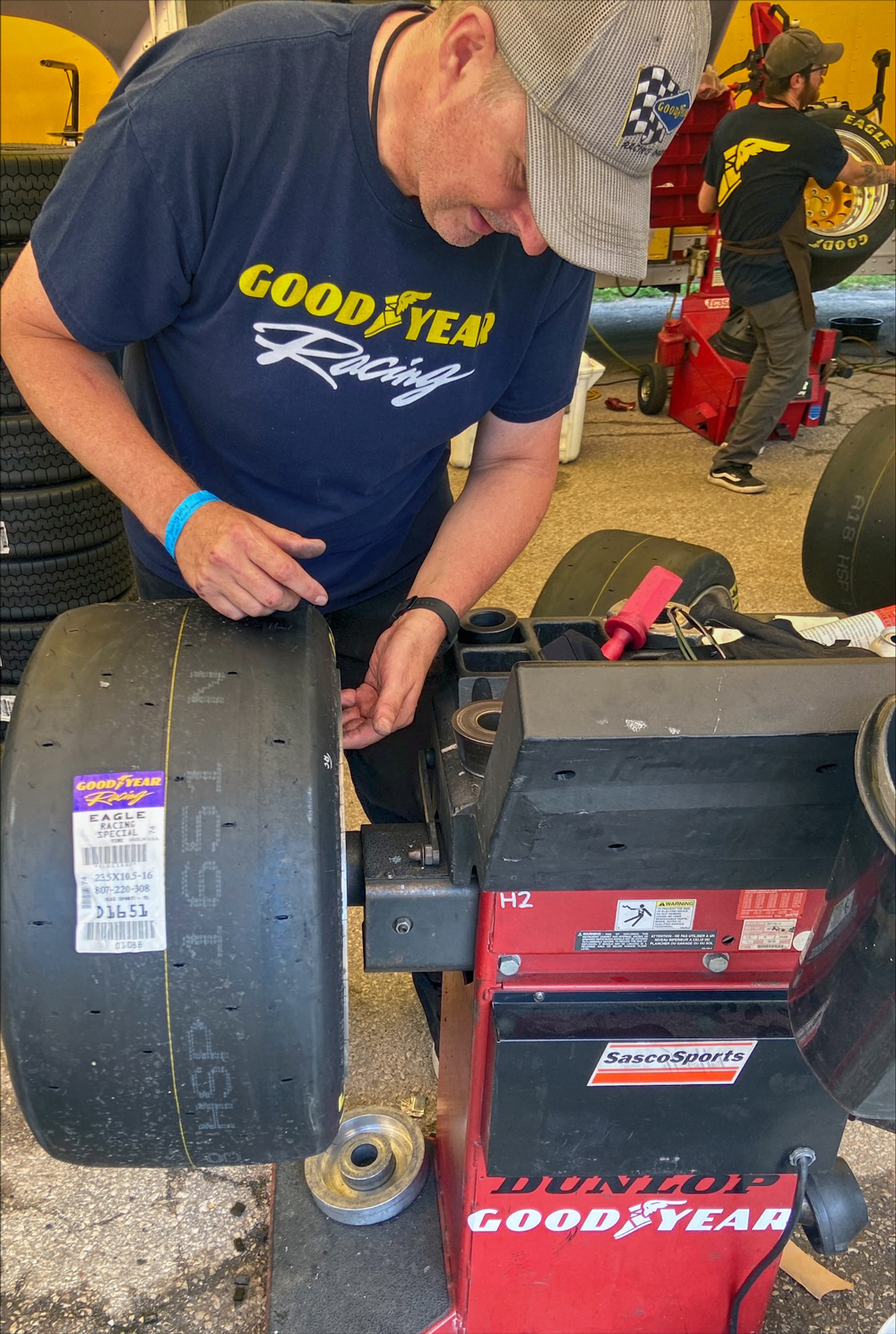Stop Doing That…Do This Instead: Choosing the Correct Tire Size for Your Road Racing Vehicle

“One of the most common mistakes we see racers make is the assumption that bigger is better,” said Goodyear’s Jay Chapman. Not only can a tire that’s too big create clearance issues, it can also negatively affect the tire’s footprint.
Maximizing the footprint may be attractive, but properly sizing your tires can improve their longevity, thermal efficiency, and overall grip.
When it comes to a race car’s performance potential, the buck stops where the rubber meets the road. All the horsepower in the world isn’t worth much if it can’t effectively be translated into forward motion, so it makes sense to do whatever it takes to increase mechanical grip. But while it may seem counterintuitive at first glance, that doesn’t always mean that a wider tire is the right answer.
“One of the most common mistakes we see racers make is the assumption that bigger is better,” explained Jay Chapman of Goodyear Race Tires, Akron, Ohio. “Folks often want to put the biggest possible rear tire on rear-wheel drive cars, but in many cases a square setup, where the same size tires are being used at both the front and the rear, will work better in those applications. You can definitely ‘over-tire’ a car.”
Over-sizing the tires for a given wheel and platform can not only lead to clearance issues that can cause the tire to rub on the inside of the fender or the outside of the fender well when the suspension compresses, it can also create other, less obvious problems that may negatively impact the car’s performance.
“If the wheel isn’t wide enough for the tire that you’re trying to use it with, it can cause the tire to ‘crown,’ where the center of the tire is higher than the rest of the surface, and that prevents it from creating a proper footprint,” Chapman said. “At that point you’re not utilizing the tire as it was designed.”
Meanwhile Drew Dayton of Yokohama Tire in Santa Ana, California, pointed out that over-sized tires can also create more work for the car. “You’re not only losing some responsiveness, there’s also a weight disadvantage because wider tires are going to be heavier, and that’s especially important when we’re talking about rotational mass. There’s also the potential for a wider tire to create more aerodynamic drag, which could also negatively affect lap times.”
Using an under-sized tire can create problems, too. Although it’s a less common occurrence, the supply chain challenges we’ve collectively seen over the past few years have recently made this situation more prevalent.

“In that situation, the tire can get overheated more easily because it can’t disperse the heat across the tire as effectively,” said Chapman. “Sometimes people try to help mask this by increasing air pressure, but that also affects tire performance across the board.”
Dayton also noted that switching up tire widths can have a significant effect on the overall dynamic balance with certain platforms. “The relationship between the front and rear is something we focus on a lot with the Porsche GT3 Cup car, for example, because they’re really sensitive to changes. You can end up fighting a lot more oversteer or understeer if you disrupt that balance.”
Chapman pointed out that while the rulebooks of most spec classes and upper-level series require all competitors to use a particular tire, there are areas of grassroots and sportsman-level racing where racers have room to dial in their setups a bit more, and tire sizing can make a significant difference in a team’s competitiveness.
“In SCCA Touring classes like T3 and T4, there’s a tire maximum width rule, but the overall diameter of the tire can be adjusted a little bit. That effectively allows a team to adjust their gear ratios to optimize the car for a particular track. If it’s a shorter track, for instance, you might want to switch to a smaller tire to come off of the turns quicker, or maybe you want a taller tire for a longer track in order to get down the straights without running out of gear.”
Dayton said that in situations where none of the available tire sizes are ideal for the wheels being used, determining which tire to use in competition occasionally comes down to the data collected during practice sessions. “For example, at Pikes Peak this year we had a team that had these really cool carbon fiber wheels that required a pretty unique rear tire size. That gave us two options: a soft compound 300/60R18, or a medium compound 320/60R18. We ended up testing both tires on the same set of wheels to figure out what the trade-offs were going to be, and ultimately which tires would produce better lap times. In that case we ended up going with the wider tire with the harder compound.”
Wheel and tire manufacturers can be a great source of information for racers who are looking to ensure that they’re getting tires that are sized appropriately for the wheels they’re being mounted on, but Chapman said that competitors should also do some fact-finding of their own to verify that everything is copasetic. “Tire temperatures and air pressure are the most basic way to get information, but I think they’re also the key to determining what’s going on with the tire. With that you can make sure you have the proper spread from the inside to the outside of the tire, and that your psi gain is where it’s supposed to be.”
Sources
Goodyear Race Tires
racegoodyear.com
Yokohama Tire Corp.
yokohamatire.com
 MEMBERSHIP LOGIN
MEMBERSHIP LOGIN JOIN PRI
JOIN PRI


